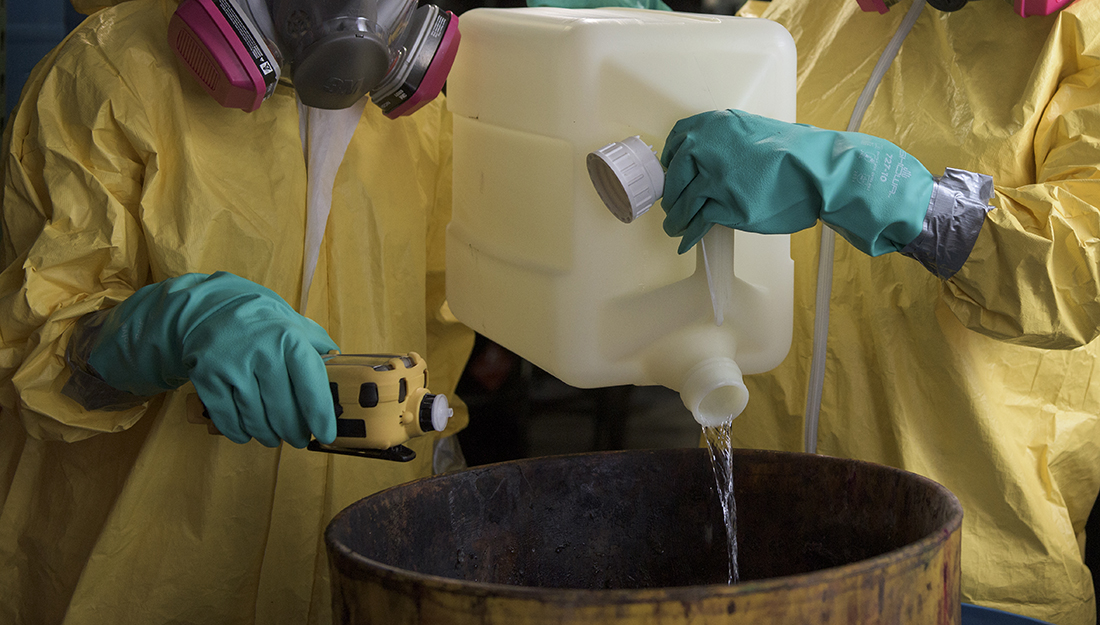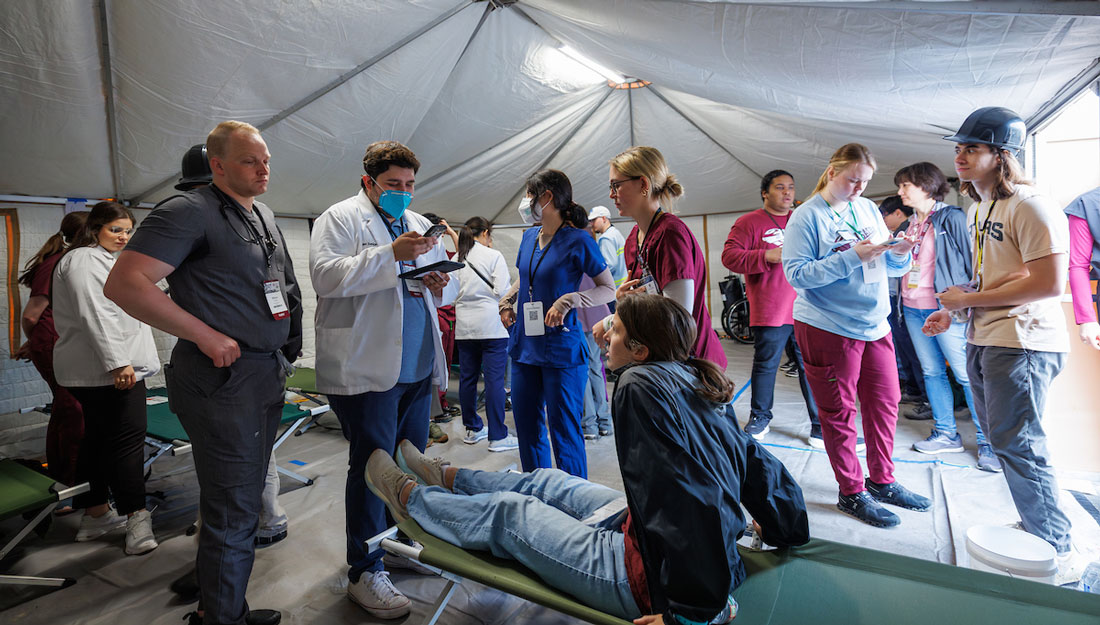- Tamim Choudhury
- Medicine, Public Health, Show on VR homepage
Aggies on the forefront of health security
Texas A&M Health Science Center graduates fight disease and build healthier communities

From the air we breathe, to the food we eat, the Centers for Disease Control and Prevention (CDC) impacts our daily lives. Tasked with improving public health, this component of the U.S. Department of Health and Human Services ensures that food and water are safe for consumption, controls disease outbreaks and informs the public on disease avoidance. Now, two Aggies are among the Epidemic Intelligence Service (EIS) officers at CDC.
Sarah Labuda, MD, ’03, College of Medicine ’07, and Amy Lavery, PhD, ’05, School of Public Health ’10, are among the boots-on-the-ground disease detectives at CDC. They are among 71 EIS officers selected in 2017 from a candidate pool of health care professionals and doctoral-level scientists.
This two-year, on-the-job training and service fellowship gives officers the opportunity to investigate both infectious and chronic diseases and improve environmental and occupational health. They conduct epidemiologic assistance investigations on a global scale.
EIS officers support public health investigations, such as identifying high-risk groups when a heatwave swept across Midwest America in the 1980s, to providing emergency assistance with outbreaks that took place in Somalia during a famine displacement in 2011. They are responsible for conducting scientific research, disseminating health information and responding to health threats.
Even though Labuda and Lavery started off on different paths at Texas A&M, both ended up as defenders of public health. Labuda earned both her undergraduate degree in zoology and medical degree from Texas A&M University.
She credits Texas A&M for getting her on the road to the EIS program. “While at Texas A&M College of Medicine, I was co-director of Health Circus, a student organization that conducted primary care outreach in rural Texas,” she said. “These rural areas had little access to health care, and serving this population—administering immunizations to children, providing diabetes screenings and general health screenings—was a great way for me to learn the skills I am using now.”
Labuda’s CDC assignment is with Arkansas Department of Health. She began the job in August and has already completed three different projects. “As I am trained in infectious disease treatment, I have been working on the state’s foodborne disease reporting system to improve it,” she said. “I also dealt with a mumps outbreak and was deployed to another state to help investigate a cluster of HIV cases.”
Labuda explained how the CDC works with states, “The CDC is invited by the state to help with an outbreak or investigation. We are there to help the state’s needs and serve the state’s health department. We look at cases, go through local resources and interview patients to understand risk factors. We do this to make recommendations on how to improve testing and access to prevention measures, then support the state in implementation.”
Lavery also earned her undergraduate degree from Texas A&M, although she majored in nutrition. She then earned a master’s degree in epidemiology from the Texas A&M School of Public Health before going on to earn her doctorate in public health from Temple University in Philadelphia.
To offer a formal definition, epidemiology is a scientific study of causes that lead to health-related patterns in specified populations. Entire communities are viewed collectively as patients. This method, used to find causes behind health outcomes and diseases, and applying this knowledge to control health problems, is Lavery’s specialty.
Lavery traces her interest in epidemiology to September 2005, when Texas A&M was set up as a transitional center for Hurricane Katrina victims. Hurricane Katrina struck the nation’s Gulf Coast, causing thousands to evacuate from their homes and seek shelter elsewhere. “Reed Arena became a medical care shelter for people coming in from Houston,” she said. “I talked to one of the public health officers, and that peaked my interest in public health. I wanted to help with disaster epidemiology, and one of my first assigned areas within CDC is in disaster recovery.”
Lavery is in Atlanta at CDC’s National Center for Environmental Health (NCEH). “I have conducted modeling and analysis to help the mapping of diseases,” she said. “I have also worked in the emergency operations center for the hurricane response, where we monitored health in the impacted populations and assessed where recovery efforts could be most useful from a public health standpoint.”
Lavery mentioned that conducting fieldwork can be the most exciting part of her job, as she figures out the sources of how diseases form, and how to prevent them in the future.
Even after the fellowship ends, both Lavery and Labuda say they look forward to continued work with the CDC and in public health. They also credit their broad range of experiences at Texas A&M for helping them find their paths to success as sentinels of our nation’s health.
Media contact: media@tamu.edu


